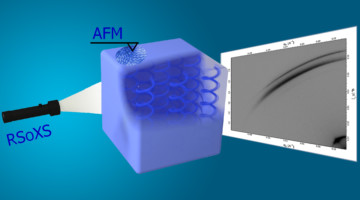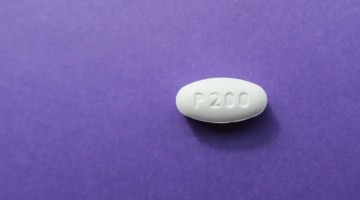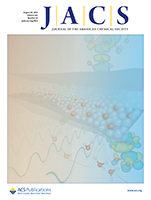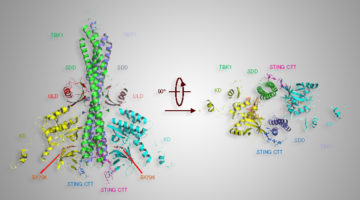Liquid crystal samples were found to exhibit up to four levels of chirality, despite being made up of achiral molecules. The work sheds light on how molecular properties and competing interactions “propagate” order from the molecular level up to the microscale, leading to complexity similar to that found in biological materials. Read more »
ALS Work Using Scattering/Diffraction
These techniques make use of the patterns of light produced when x-rays are deflected by the closely spaced lattice of atoms in solids and are commonly used to determine the structures of crystals and large molecules such as proteins.
A Citizen-Science Computer Game for Protein Design
Using the computer game, “Foldit,” nonexpert citizen scientists designed new proteins whose structures, verified at the ALS, were equivalent in quality to and more structurally diverse than computer-generated designs. The work shows the potential of using crowd-based creativity in the design of new proteins for fighting illness and disease. Read more »![]()
![]()
X-Ray Experiments Contribute to Studies of a Drug Now Approved to Combat Tuberculosis
The U.S. Food and Drug Administration has approved a new antibiotic that, in combination with two existing antibiotics, can tackle one of the most formidable and deadly treatment-resistant forms of the bacterium that causes tuberculosis. Studies exploring the structure and function of the new drug benefited from x-ray experiments at the ALS. Read more »
Chemical and Morphological Origins of Improved Ion Conductivity in Perfluoro Ionene Chain Extended Ionomers
Resonant x-ray scattering and x-ray absorption spectroscopy with elemental sensitivity unravel structural features tied to water–ion domains and discern sulfur-containing groups in sulfonated ionomers, which help delineate chemical factors controlling their phase-separated morphology and governing ion transport. Read more »
Newly Discovered Minerals Reveal Anomalous Origins
Researchers characterized two highly unusual nickel-containing minerals, both unearthed in an ancient geological site in southern central Siberia. The findings extend our understanding of naturally occurring mineral species and varieties and provide useful insights into the environments leading to the formation of potentially valuable mineral ores. Read more »![]()
![]()
Sulfur-linked cyanobiphenyl-based liquid crystal dimers and the twist-bend nematic phase
The synthesis and characterization of cyanobiphenyl-based liquid crystal dimers containing sulfur links between the spacer and mesogenic units are described. Resonant x-ray scattering studies of the twist-bend nematic phase at both the carbon and sulfur absorption edges were performed to determine the critical behaviour of the helical pitch at the transition to the nematic phase. Read more »
A Bullfrog’s Powerful Defense Against Toxic Red Tides
Working as a “molecular sponge,” a bullfrog protein known as saxiphilin provides powerful, yet little understood, protection against deadly neurotoxins produced in red tides. Crystallography studies at the ALS have clarified saxiphilin’s function, potentially enabling better ways to monitor and combat toxins in our oceans and food supplies. Read more »![]()
X-Ray Studies Key in Study Relating to Immune System-Signaling Protein
A grouping of amino acids—part of an important signaling protein, STING—plays an important role in activating the immune system. A study conducted through the Collaborative Crystallography program at the ALS confirmed how this part of the STING protein helps to bind a protein-modifying enzyme associated with autoimmune diseases and some cancers. Read more »
A Frog Worth Kissing: Natural Defense Against Red Tide Toxin Found in Bullfrogs
Researchers have discovered how a protein produced by bullfrogs binds to and inhibits the action of saxitoxin, a deadly neurotoxin that causes paralytic shellfish poisoning. The findings could lead to the first-ever antidote for the compound, which blocks nerve signaling in animal muscles, causing death by asphyxiation when consumed in sufficient quantities. Read more »
Linking Structure to Behavior in Twisted Liquid Crystals
Researchers untangled connections between structure and behavior in a class of liquid crystals consisting of flexible, chain-like molecules that self-organize into twisting patterns. The study opens up new possibilities for designing novel liquid-crystal molecules that allow greater control of nanoscale behavior for technological applications. Read more »![]()
![]()
- « Previous Page
- 1
- …
- 22
- 23
- 24
- 25
- 26
- …
- 39
- Next Page »









